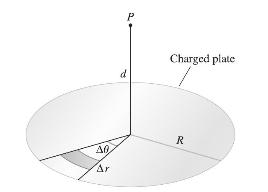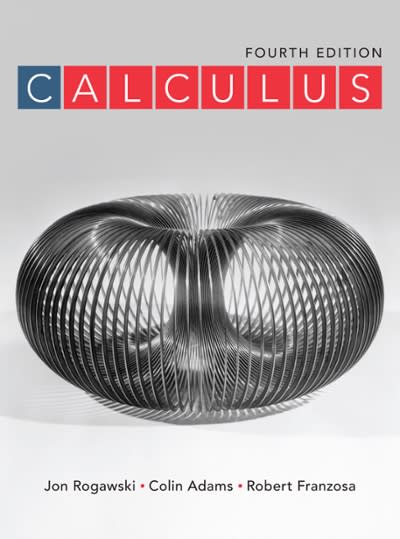According to Coulomb's Law, the attractive force between two electric charges of magnitude (q_{1}) and (q_{2}) separated
Question:
According to Coulomb's Law, the attractive force between two electric charges of magnitude \(q_{1}\) and \(q_{2}\) separated by a distance \(r\) is \(k q_{1} q_{2} / r^{2}\) ( \(k\) is a constant). Let \(F\) be the net force on a charged particle \(P\) of charge \(Q\) coulombs located \(d\) centimeters above the center of a circular disk of radius \(R\), with a uniform charge distribution of density \(ho\) coulombs per square meter (Figure 21). By symmetry, \(F\) acts in the vertical direction.
(a) Let \(\mathcal{R}\) be a small polar rectangle of size \(\Delta r \times \Delta \theta\) located at distance \(r\). Show that \(\mathcal{R}\) exerts a force on \(P\) whose vertical component is
\[
\left(\frac{k ho Q d}{\left(r^{2}+d^{2}ight)^{3 / 2}}ight) r \Delta r \Delta \theta
\]
(b) Explain why \(F\) is equal to the following double integral, and evaluate:
\[
F=k ho Q d \int_{0}^{2 \pi} \int_{0}^{R} \frac{r d r d \theta}{\left(r^{2}+d^{2}ight)^{3 / 2}}
\]

Step by Step Answer:






